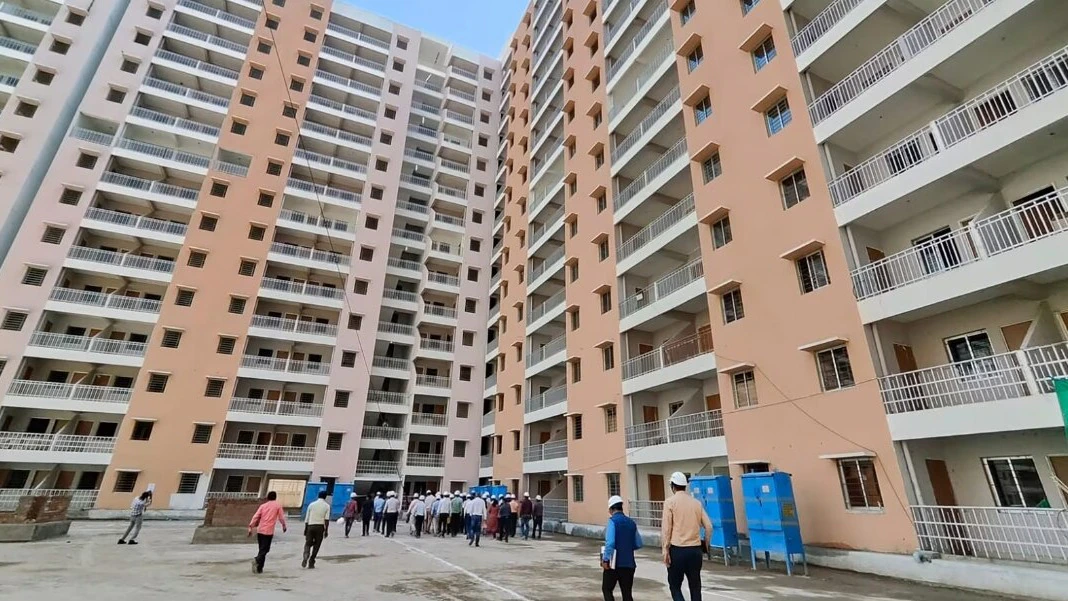Table of Content
- Introduction
- Table of Contents
- 1. What is TDS on Rent Payment?
- 2. Why is TDS on Rent Payment Important?
- 3. Applicability of TDS on Rent Payment
- 4. TDS on Rent Payment Rates
- 5. TDS on Rent Payment for Residential vs. Commercial Properties
- 6. How to Calculate TDS on Rent Payment
- 7. TDS Payment Process for Tenants and Landlords
- 8. Due Dates for TDS on Rent Payment
- 9. Penalties for Non-Compliance
- Conclusion
Introduction
In India, understanding tax deduction at source (TDS) on rent payments is essential for both landlords and tenants. The tax laws mandate specific rules, rates, and procedures to ensure compliance. This article will cover all the details regarding TDS on rent payment, including its applicability, rates, due dates, and practical examples, making it easier for readers to understand their responsibilities.
Table of Contents
- What is TDS on Rent Payment?
- Why is TDS on Rent Payment Important?
- Applicability of TDS on Rent Payment
- TDS on Rent Payment Rates
- TDS on Rent Payment for Residential vs. Commercial Properties
- How to Calculate TDS on Rent Payment
- TDS Payment Process for Tenants and Landlords
- Due Dates for TDS on Rent Payment
- Penalties for Non-Compliance
- Frequently Asked Questions (FAQs)
1. What is TDS on Rent Payment?
TDS on Rent Payment is the tax deducted at source on rent paid to a landlord. This deduction ensures that tax obligations are fulfilled at the time of payment. It applies to both individuals and companies who pay rent, but the rates and applicability may vary based on several factors.
2. Why is TDS on Rent Payment Important?
TDS on rent payments is crucial for ensuring tax compliance, increasing revenue for the government, and bringing transparency to rental income. This section covers the significance of TDS deductions and how it benefits both the government and taxpayers.
3. Applicability of TDS on Rent Payment
3.1 Who Needs to Deduct TDS on Rent Payment?
TDS on rent payment is applicable to:
- Individuals and Hindu Undivided Families (HUFs) paying rent above a certain limit.
- Companies, firms, trusts, and other entities renting property for business.
3.2 Threshold Limits for TDS on Rent Payment
- Residential Rent: ₹50,000/month or above.
- Commercial Rent: No threshold limit; TDS is applicable on any amount.
Also Read: What is a leave and licence agreement?
Table: Applicability of TDS on Rent Payment
|
Category |
Applicable Limit |
TDS Rate |
|
Residential Property Rent |
Above ₹50,000/month |
5% |
|
Commercial Property Rent |
Any Amount |
10% |
4. TDS on Rent Payment Rates
The rates for TDS on rent payment differ based on the type of property and the entity involved. This section explains these rates in detail and presents a table for quick reference.
|
Type of Entity |
Type of Property |
TDS Rate |
|
Individual or HUF |
Residential |
5% |
|
Individual or HUF |
Commercial |
10% |
|
Company |
Residential/Commercial |
10% |
5. TDS on Rent Payment for Residential vs. Commercial Properties
For residential properties, TDS is deducted only if the rent exceeds ₹50,000 per month, while for commercial properties, TDS is applicable regardless of the rent amount. Here, we explain these distinctions and their implications for tenants and landlords.
6. How to Calculate TDS on Rent Payment
To calculate TDS on rent payment, follow these steps:
- Determine the monthly or annual rent amount.
- Apply the appropriate TDS rate.
- Deduct TDS from the monthly rent payable to the landlord.
Example Calculation
Suppose a tenant pays a monthly rent of ₹60,000 for a residential property. TDS would be calculated as:
- Annual Rent = ₹60,000 x 12 = ₹7,20,000
- TDS Deduction = ₹7,20,000 x 5% = ₹36,000
|
Monthly Rent (₹) |
Annual Rent (₹) |
TDS Rate |
TDS Amount (₹) |
|
60,000 |
7,20,000 |
5% |
36,000 |
7. TDS Payment Process for Tenants and Landlords
This section describes the step-by-step process of paying TDS on rent for both tenants and landlords, including filling Form 26QC and issuing Form 16C to the landlord.
Also Read: What documents can you use as address proof in India?
Steps for Tenants:
- Calculate TDS on rent.
- Deposit TDS using Form 26QC on the TIN (Tax Information Network) website.
- Provide Form 16C to the landlord as proof of TDS deduction.
Steps for Landlords:
- Ensure the tenant has deducted TDS.
- Verify the TDS payment through Form 16C received from the tenant.
8. Due Dates for TDS on Rent Payment
Understanding the due dates is critical to avoid penalties. TDS on rent payments for individual/HUF tenants should be deposited within 30 days from the end of the month in which the deduction was made.
|
Deduction Month |
TDS Payment Due Date |
|
April |
30th May |
|
May |
30th June |
|
… |
… |
|
March |
30th April |
9. Penalties for Non-Compliance
Non-compliance with TDS on rent payment attracts penalties and interest. This section discusses the types of penalties for late deductions, non-deductions, and late payments of TDS on rent.
9.1 Interest and Penalty Charges
- Interest: 1% per month for late deduction, 1.5% per month for late deposit.
- Penalty: ₹200 per day for late filing of Form 26QC.
Table: Penalties and Interest Charges for Non-Compliance
|
Type of Non-Compliance |
Penalty Type |
Rate/Amount |
|
Late Deduction |
Interest |
1% per month |
|
Late Deposit |
Interest |
1.5% per month |
|
Late Filing of 26QC |
Penalty |
₹200/day |
Conclusion
Understanding TDS on rent payment in India is essential for compliance with tax laws. Both tenants and landlords must be aware of the rates, due dates, and penalties to avoid financial penalties. This comprehensive guide simplifies the process, making it easy for readers to understand their obligations. By following the steps outlined, both parties can ensure smooth transactions and avoid legal complications.
Aslo Read: How to remove co-owner name from property title deed?











_1766133697.webp)
Ans 1. The TDS rate is 5% if the monthly rent exceeds ₹50,000.
Ans 2. Yes, if excess TDS is deducted, the landlord can claim a refund while filing the income tax return.
Ans 3. Yes, NRIs are also subject to TDS on rent, with a rate of 30% without any threshold limit.
Ans 4. Section 194I: TDS Rate and Threshold Limit That means if the payer's total rent paid or payable to the payee in an FY does not exceed ₹2,40,000, no TDS deduction is required. However, if the total rent exceeds ₹2,40,000, a TDS deduction is mandatory from the entire amount, not just the excess amount.
Ans 5. Under section 194-I, the TDS is deducted from the rent if such payment is likely to be Rs 2.4 lakh or more during the year. However, if there are co-owners of the property, each having a definite and ascertainable share in the property, the limit of Rs 2.4 lakh will apply to each co-owner separately.